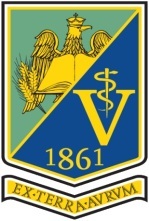Published in Scientific Works. Series C. Veterinary Medicine, Vol. LXIV, Issue 2
Written by Dragoș COBZARIU, George Andrei NECULA, Stelian BĂRĂITĂREANU, Georgeta ȘTEFAN, Doina DANEȘ
The Canine herpesvirus-1 (CHV-1) is causing in dogs a wide range of reproductive problems: infertility, foetal resorption, abortion, weak puppies, stillborn, low conception rate, small litter size and neonatal mortality, according to the age and pregnancy stage. The aims of the study where to assess the status of CHV-1 infection and to investigate the clinical pattern of the disease, in three Romanian kennel dogs. Blood samples from 44 subjects, aged from 1 to 5.5 years (20 dogs from kennel A, 16 dogs from kennel B, and 8 from kennel C), without history of vaccination against CHV-1 where submitted to study. The serum samples were analysed for the detection of antibodies to CHV-1 by immunofluorescence assays. In this survey, the average of seropositive animals were being 86.36%, but ranged from 100% in kennel A and B, to 25.00% in kennel C. Registered reproductive disorders were represented by neonatal mortality (70%) and infertility (30%). Our study emphasizes the widespread of CHV-1 infection and strengthens the recommendation for the animals’ immune status assessment before their breeding season.
[Read full article] [Citation]



